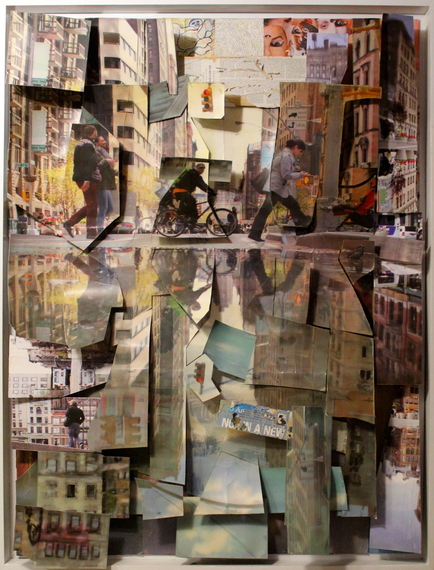The fabric of New York City is its people, woven from a stunningly complex web of social circles that have fascinated me since childhood. My city inspired me to take a more serious look at sociopolitical structures as an undergrad student of political science. Observations from my educational and professional background have evoked the design of a concept that I envision as a new area of study and a viable career path. I call it Social Architecture. People like me, social architects, consciously plan and design social space within physical space to optimize human interactions and maintain intended social frameworks. In other words, we create "vibes," socially. Implementing strategic social architecture in businesses has powerful potential to enhance human happiness and productivity which can create room for better customer service and financial success.
I may be one of few who do this for a living but the concept of social architecture (SA) is not exactly new. SA draws upon theories from a number of established academic disciplines such as political science, psychology, sociology, economics, and anthropology but it approaches those areas of study under the non-academic influence of etiquette and charm. The term "social architecture" has appeared in remote corners of the Internet circa 2009. A Google search will yield a brief Wikipedia page, blog links, and a website by computer scientist Kevin M. Washington who claims to be the creator of SA. Though he and I have never met, we have separately and remotely convened on the recognition of this term and that it is a concept worth sculpting into something serious, albeit in very different ways.
Much of the limited writing on this subject fixates on the structure of digital spaces, such as social media networks. This focus highlights a worrisome trend in society today: we seem to concern ourselves so much with our virtual communities that at times we ignore the human beings who are physically in front of us. SA was devised as a response to the fear of neglect in the planning, designing, and growing of social networks IRL.
At its core, SA is engineering within social spaces. It works under the guise of social psychologist Kurt Lewin's (1936) brilliant equation: B = f (p,e) which is written as "Behavior is the function of a person within their environment." Most importantly, it is the conscious design of a social environment that encourages a range of behaviors leading toward a goal or set of goals. Social architects seek to build bridges between formerly disparate people that otherwise would not exist. I have consulted with conventional architecture firms to discuss parallels in what we do; much in the same way they design and plan physical space, social architects design and plan social space within the physical space to smooth and enhance the flow of human interactions.
Taking this approach to the design of micro-environments such as the workplace is a great example of SA's power to change the way people feel, specifically about their work and coworkers. Well-documented instances of specially tailored social spaces exist in progressive companies like Google or Condè Nast. A newer example of creative social composition is evident at the Barbarian Group office in Chelsea, where architect Clive Wilkinson has designed a large, undulating communal "super desk" that they say keeps people and ideas flowing. Or consider NeueHouse in New York's Flatiron district where I currently work: a private work collective designed by David Rockwell. It's an entirely new kind of office that integrates design, programming, hospitality and community to create a dynamic experience for the member entrepreneurs who are resident at Neuehouse.
Another way to profit from a socioarchitectural approach to designing space is within an industry in which I am also very familiar: the bar and restaurant industry. According to a report by Business Insider, restaurants in NYC face an 80% fail rate. An establishment can close for any number of reasons, and every case is different. However, one compelling argument posits that a poorly managed social structure (from investor to owner to management to employee to customer) accounts for most of these failures. The worst reviews of failed establishments will yield complaints about the "service," the human interaction aspect of the business, which is often shockingly overlooked. Service can and will be influenced by SA; considerations such as the flow of bodies in entry and exit, staffing selections, training procedures, or internal communication styles certainly impact the bottom line. Danny Meyer's best-selling book "Setting The Table: The Transforming Power of Hospitality in Business," is a comprehensive commentary on the importance of enlightened hospitality and intrinsically incorporates SA concepts. I would take his ideas a step further in that social architects can work on a consulting basis, as I do, to help establishments optimize their social flow and thus their ability to provide top-notch hospitality from the front to the back of the house.
Informed by many social science theories and successful new trends in workspace models, we are embarking on a silent revolution of maximizing human interactions and productivity in the social settings we share. Social architecture is not meant to control or punish people. Rather, it is a trainable method and a paradigm that is used to encourage good--and discourage bad--behaviors. SA has little to do with religion or traditional politics; it helps individuals focus mainly on creating a hospitable space that facilitates effective communication with the intention to create a culture of helping. A culture of helping amongst individuals promotes efficiency in carrying out tasks. Efficiency in carrying out tasks translates directly into dollar signs for many businesses. Beyond financial gains, social architecture suggests a better bottom line for modern companies: A person's ability to thrive in their environment(s) can and should be the new hallmark of success.
